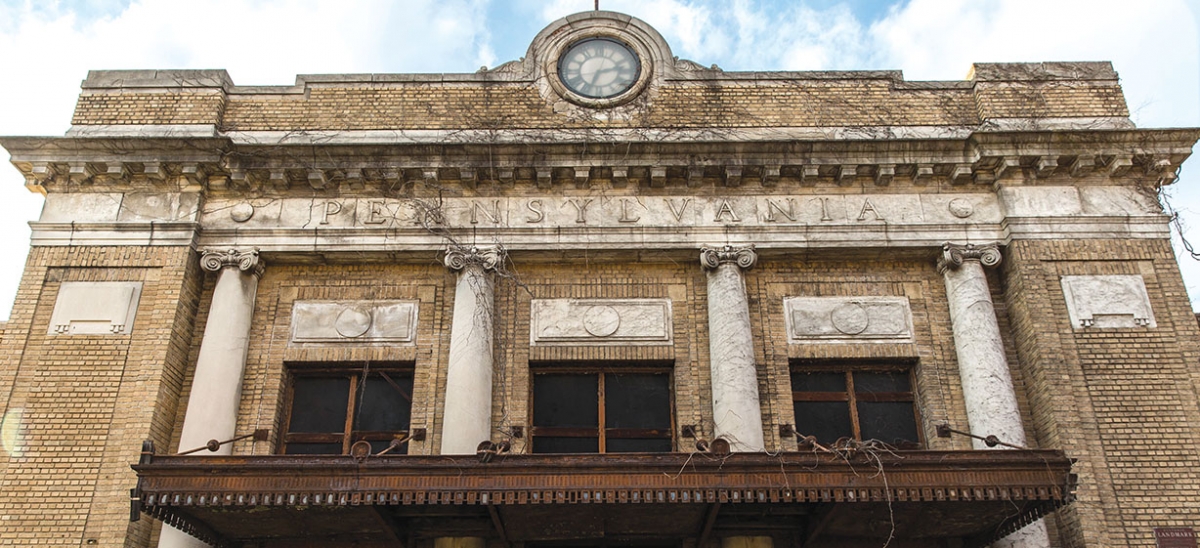
Shortly before he died last year, Korean War veteran Jack Ward stood inside the doorway of the Save-A-Lot grocery store in Wilkinsburg’s Penn Avenue business district. Wearing his Marine cap and shirt with service patches, he handed out pamphlets about the proposed sale of alcohol in some borough restaurants. A previous referendum had failed, but borough residents were trying again. When a shopper asked whether Ward favored the change, he said, “I wasn’t before, but I am now. I think Wilkinsburg’s ready for it.”
Wilkinsburg residents recently agreed to allow alcohol sales in some borough businesses, overwhelmingly approving the new referendum. It’s one of many changes that residents of the long-troubled borough have been pushing. And like a jigsaw puzzle, pieces of Wilkinsburg’s redevelopment are coming together.
New streetlights, trees, sidewalks and road improvements have spruced up Penn Avenue. Older businesses are reinvesting, and new ones are moving in, often in the hands of a younger generation.
The large and long-vacant Penn-Lincoln Hotel on Penn Avenue has been razed, opening a large developable footprint. A halfblock stretch of Wood Street is being refurbished by a private developer into first-floor shops and second-floor apartments. The Pittsburgh History and Landmarks Foundation has redeveloped apartment buildings and single-family homes, and has launched a $10.5 million plan to create additional housing. And Wilkinsburg Council is considering new business investment incentives.
The changes have been a long time coming for Wilkinsburg, which has struggled since the 1960s, when suburban flight began to empty its streets and schools. And for the tens of thousands of drivers who pass through weekly on Penn Avenue, the borough long has been a portrait of blight, highlighted by dilapidated and vacant buildings.
Slowly, however, and through the efforts of many, a new era is at hand. A stubborn obstacle, however, has been the Wilkinsburg schools, saddled with one of the highest school tax rates in the state and one of the worst performance records.
“If the education system isn’t corrected, the borough isn’t going to completely turn around,” said Brian Jensen, senior vicepresident of Allegheny Conference on Community Development. “Many families can’t afford to send their kids to private school.”
Faced with low enrollment, an untenable financial future, and inadequate offerings for students, the board of the failing district sought help from neighboring districts, and in October the Pittsburgh school board agreed to educate Wilkinsburg’s 200 middle and high school students next fall. Wilkinsburg’s fire department also has entered a partnership with the Pittsburgh Fire Department. Whether further cooperative steps will materialize is unknown, but especially with the agreement with Pittsburgh Schools, Wilkinsburg’s Gordian knot is fraying, if not completely severed.
For many, the Wilkinsburg train station remains a powerful symbol. With its sandstone foundation and stone pillars, front and side marquees and clock atop the façade, the edifice retains its stately aspect at first glance. Inside, however, the circa-1916 Beaux Artsstyle station’s musty waiting area is strewn with fallen plaster. Marble remnants, wrought-iron ticket booths, ornate columns, and a large, roofed-over skylight hint at more prosperous times even as they exemplify decay.
“This place is probably the most noticeable symbol of blight in Wilkinsburg,” said Tracey Evans, executive director of the Wilkinsburg Community Development Corporation. “This is the building that people want to see renovated. People drive by it, and it seems like things haven’t changed.”
With the old station, Evans sees the possibility of making a statement that the borough has turned the corner, and her group would like to redevelop it. Reconstruction could cost $1.6 million, according to a 2010 survey. Stabilizing the structure and cleaning its exterior alone will cost $450,000. So far, Allegheny County, which owns the station, has raised some $175,000 toward the effort.
“We’d like it to be a shared space, open to the public and connected to the (adjacent) East Busway,” said Evans. She envisions a renovated station with a coffee shop, post office and badly needed office space.
Others have suggested a microbrewery in the large basement that would be in keeping with other nascent efforts, such as a food tour including restaurants Fireside Caribbean on Penn Avenue and Soul Food Connection on Wood Street.
“This is a landmark building,” said Robert Hurley, director of the Allegheny County Redevelopment Authority. Hurley hopes to have the roof under construction this year. “Here you’ve got an active community group—the Wilkinsburg CDC. We wouldn’t come into a community if it wasn’t ready to invest in itself.”





